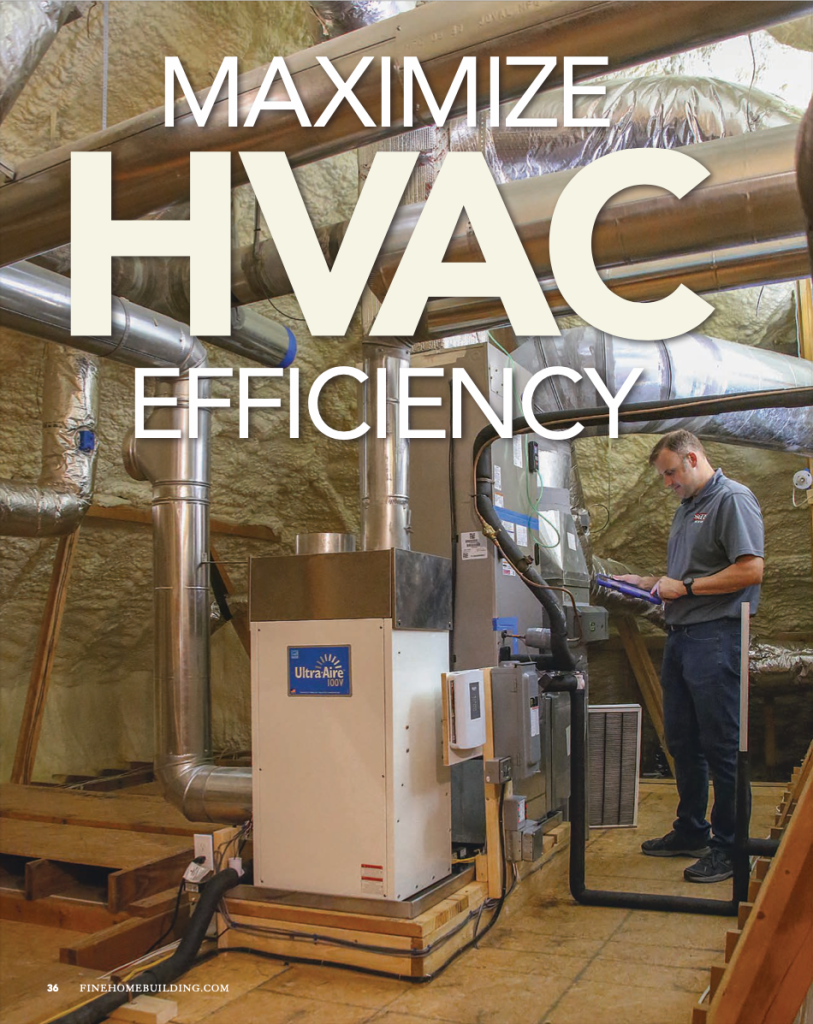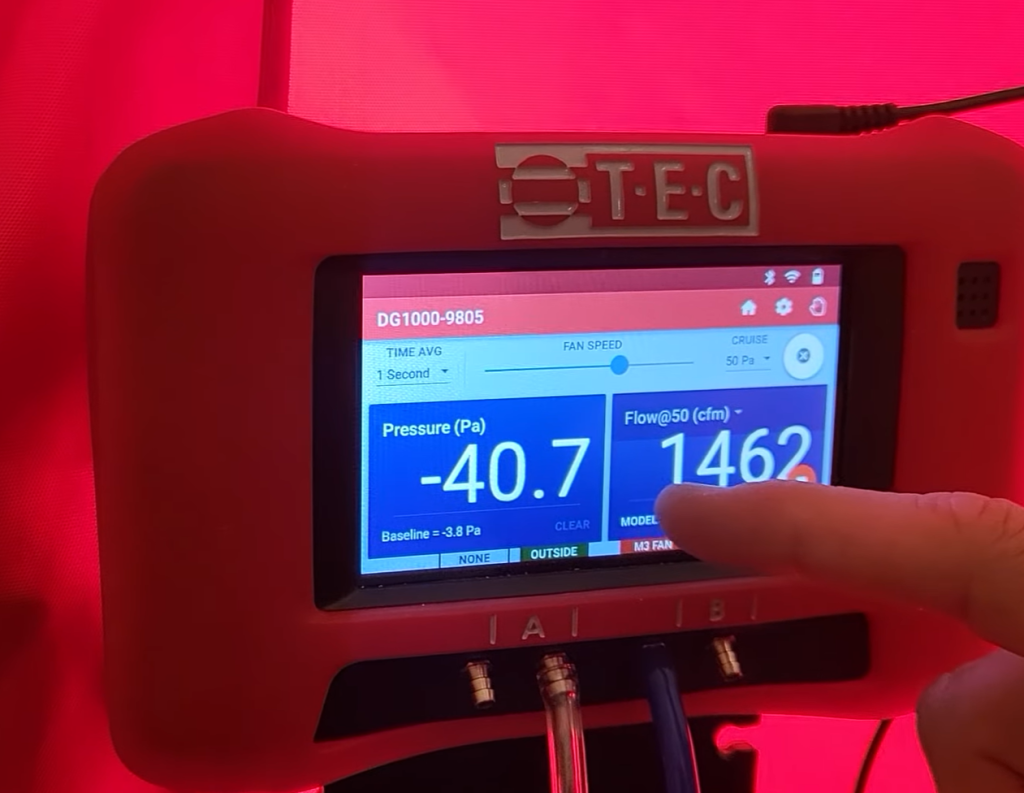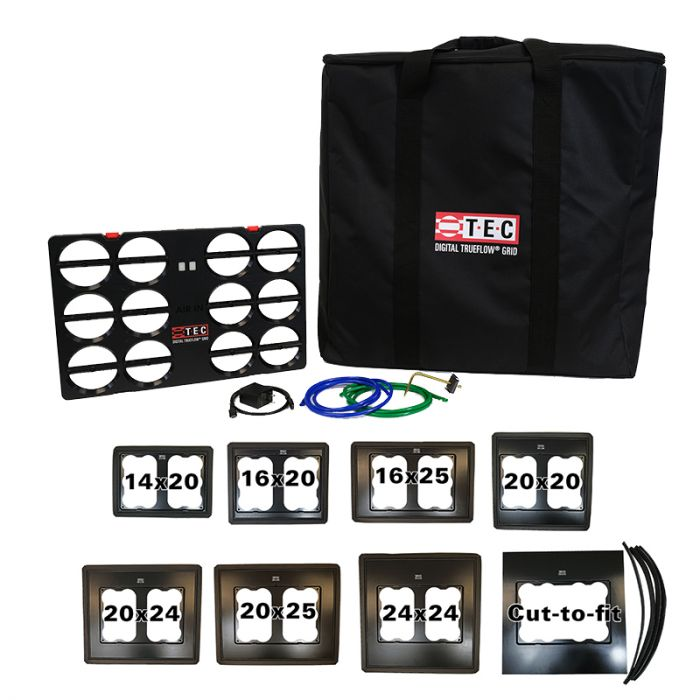Get Tech Tips
Subscribe to free tech tips.
The Ups and Downs of High-Performance HVAC

This tech tip recaps the livestream by the same name, featuring HVAC School contributors Matt Bruner and Adam Mufich and special guests Michael Housh, Chris Hughes, and Dustin Cole. You can watch that livestream on our YouTube channel HERE.
“High-performance HVAC” is a term we hear quite a bit these days, but it’s not easy to find a hard and fast definition for it. It’s not very clear how a high-performance HVAC contractor differs from any other HVAC contractor, but it also isn’t a term that can apply to just anyone.
We’re going to cover the practices that high-performance HVAC contractors do and how to get started in that business. There is a market associated with specific diagnostic tests and comfort upgrades, and these can present fulfilling and lucrative opportunities. We’ll cover what sets high-performance HVAC apart from the general HVAC service market.
What is High-Performance HVAC?

The main goal of the HVAC business is to manage people’s comfort in their indoor living spaces by installing and servicing equipment. High-performance HVAC kicks things up a notch by focusing on the building as a system.
High-performance HVAC contractors see home performance and building science as a natural extension of HVAC. Manual J load calculations and blower door tests are building science tests and concepts, but they maximize the value of the HVAC system when done by the HVAC contractor.
The ACCA (Air Conditioning Contractors of America) design manuals are a great place to dip your toes into the world of high-performance HVAC. Manual J allows you to calculate the heat gains and losses in a home, which we can then use to hand-pick equipment that matches those needs (Manual S). Air distribution also plays a major role in comfort, so ACCA Manual D can help you design duct systems, and Manual T can help you determine where to place vents to maximize comfort.
However, high-performance HVAC also has two other big factors: testing and consultative sales. Testing allows you to find flaws in the building or duct system design that you may be able to rectify. Common testing methods include duct leakage and blower door tests. Once you know what you can improve in any given situation, you can sell those improvements to the customer.
Overall, high-performance HVAC acknowledges that the HVAC trade is under the building science umbrella, and it uses building science tools and principles to get the best performance out of HVAC equipment.
What Makes a High-Performance Contractor?
We’ve established that a “high-performance” HVAC contractor needs some sort of building science knowledge and the ability to perform advanced tests to determine issues with the structure as it relates to comfort. But what are the requirements to be a “high-performance” contractor?
The “high-performance” label can quickly become a cliche if just anyone can call themselves a high-performance contractor. There is a difference between people who know some building science and those who regularly perform advanced diagnostics, do load calculations, and create solutions tailored to each unique building.
At a minimum, a high-performance contractor should be able to use ACCA Manuals J, S, D, and T with software in the field, understand pressures in relation to the building envelope, either perform advanced testing or call someone in to do it, and fully commission their installs.

Credit: Chris Hughes (TEC) and finehomebuilding.com
Learning the ACCA manuals is a process that doesn’t happen overnight, and it takes a while to become proficient with the software. If you’re not yet proficient enough but want to keep practicing, allow your prices to reflect that.
You can also always call in a subcontractor to handle the work that requires certain diagnostic methods outside your skill set or advanced knowledge of HVAC design. In both of those cases, you’re still offering a high-performance HVAC service, even if you’re not a building envelope, duct design, or blower door expert.
Is High-Performance HVAC a Lucrative Business?
High-performance HVAC requires a lot of time and has a steep learning curve, which is lucrative in the long term but can make for a rough tradeoff in the short term. You build on existing knowledge and skills, and you’re not going to get rich quickly as you stumble your way through the learning stages.
You’ll probably find that many people in your market suffer from the same sorts of comfort problems. Many of the building design drawbacks are similar in houses that were built in the same area around the same time. For example, duct leakage in vented attics is a big and common comfort problem in the Southeastern United States.
Once you’re aware of those problems in your market, you can get into a rhythm to quicken your processes and become more skillful. When you get quicker and better at high-performance HVAC, you can make your prices reflect that.
Of course, the knowledge you’ll earn along the way will be priceless, but it takes a significant time and money investment to make the business pay off. High-performance HVAC is also very tool-dependent, and it requires a significant investment of money and time. It’s one thing to purchase Wrightsoft, but it’s another to take the time and learn to use it properly.
A High-Performance HVAC Contractor’s Responsibility to Their Customers
While it may seem like high-performance HVAC is a business of upselling, it’s really a business of exploring all avenues to solve comfort problems. We’re not cleaning coils and offering to install an ultraviolet (UV) light. We’re performing deliberate tests that tell us critical things about a system, like duct leakage.

At times, we may have to deliver the hard truth that an expensive upgrade may be necessary to solve the problems. However, you never know what a customer will agree to pay for until you present all of the facts and possible solutions.
Customers deserve to be aware of the issues in their homes—noise, dust, duct leakage, and more. They have a choice to pay for those once they have the facts.
Now, that doesn’t mean that money conversations will be easy. That’s why it’s good to get them out of the way early on, if possible. Paying for testing should be the standard, and the value of those testing services should be clear from the get-go. These conversations also weed out people who aren’t willing to pay for high-performance testing and upgrades.
Challenges of High-Performance HVAC
While some customers may want high-performance upgrades, not all of them are willing to pay for the full package. We need to be able to manage expectations a bit more intensively than in a typical HVAC job.
It’s also simply not profitable to try to solve everyone’s problems, especially if they’re not willing to pay for the skills and services you bring to the table.

While you can’t turn down every imperfect job, you will need to be able to own the outcomes of the jobs you do accept. It is possible to own the outcome without owning the customer’s problems. Again, a lot of that comes down to managing expectations and communicating them very clearly so that customers won’t be disappointed with the results they’ve willingly paid for.
There are also some barriers to entry; you must know how to use load calculation and design software. However, it’s a very tall ask to learn the theory and the software at the same time. Learning the ACCA manuals before learning how to use the software may be better than expecting to become proficient in theory and practice at the same time. Conversely, some people may benefit from experimenting with the software and learning the theory as they see their results. You have to understand your learning style and commit to learning the theory and practice of HVAC design in the way that makes the most sense to you.
Why is High-Performance HVAC More Common in Smaller Companies?
While smaller companies may not have as much financial power as larger ones, we tend to see more of them in the high-performance HVAC business. It’s likely because many of the challenges with high-performance HVAC are easier to navigate with fewer people.
Since high-performance HVAC is so process-driven and requires an extensive time investment, it’s usually easier to implement those big changes at a smaller scale. Think about all the resources that would be needed to train hundreds of technicians compared to less than 10 technicians. The training might not be as effective on a large scale, either.
Individual contractors are the ones who are largely spearheading the home performance trend in HVAC service and installation. The accessibility of advanced diagnostic tools, like blower doors and the TrueFlow® grid, makes it possible for contractors to learn and master the art of high-performance HVAC.
How Salespeople Can Use Tools to Sell High-Performance Upgrades
With tools like the Duct Blaster®, blower door, and TrueFlow® grid, salespeople can give customers some clues about the areas of their HVAC systems that need improvement.
A TrueFlow® grid measures airflow in either the filter slot or grille. These measurements can give people clues that their ductwork may be undersized. Unlike a manometer, which only measures static pressure, a TrueFlow® grid can give static pressure and actual airflow readings (in CFM). It tells us how much air is moving, not just how much pressure the air is exerting on the ductwork. Static pressure only gives part of the picture and is heavily affected by dirty coils, blower wheels, and filters.

Credit: The Energy Conservatory (TEC)
If there are still comfort issues after you determine that the ducts are sized appropriately, you can then consider testing for duct leakage. A Duct Blaster® will manipulate the pressures in the ductwork to tell you what the leak rate is and identify problems that the customers will be able to see with their own eyes.
Blower doors test for building envelope leakage, which can heavily impact heat loads. All of these tools produce results in the form of a customer-friendly report, and they all test for specific conditions.
Just recently, TEC and NCI have teamed up to develop the Roomulator™, an inexpensive tool about to reach the market that allows people to find pressurization problems in a building. These issues can happen if a room has an inadequate return path for the proper amount of supply air going in.

Credit: The Energy Conservatory (TEC) and National Comfort Institute (NCI)
The Roomulator™ will help techs understand the air movement required for proper balancing of rooms when we know the pressures (acquired with a precision micro-manometer) and sizes of small openings that the air is moving through, like cracks under doors.
Conclusion
High-performance HVAC is a discipline that requires a heavy time investment, but it’s one that anyone can learn with the right mindset. Even though there are requirements to be a true high-performance HVAC contractor, there are plenty of resources that can help you offer those high-performance upgrades to your customers.
You may need to keep prices lower as you learn or hire subcontractors to handle certain tests or calculations early on. Once you develop a process that works for your market and become more proficient and confident, you can make a respectable living by serving as a comfort consultant.
Nobody is alone in this field! There are many social groups out there with people who are willing to help other technicians become better at their craft, especially in the high-performance HVAC world. There are formal organizations like the National Comfort Institute that support process and procedure-driven training initiatives, and there are communities like the HVAC School Facebook group that will help with everyday questions as you get your footing in your new HVAC Niche.











Comments
To leave a comment, you need to log in.
Log In